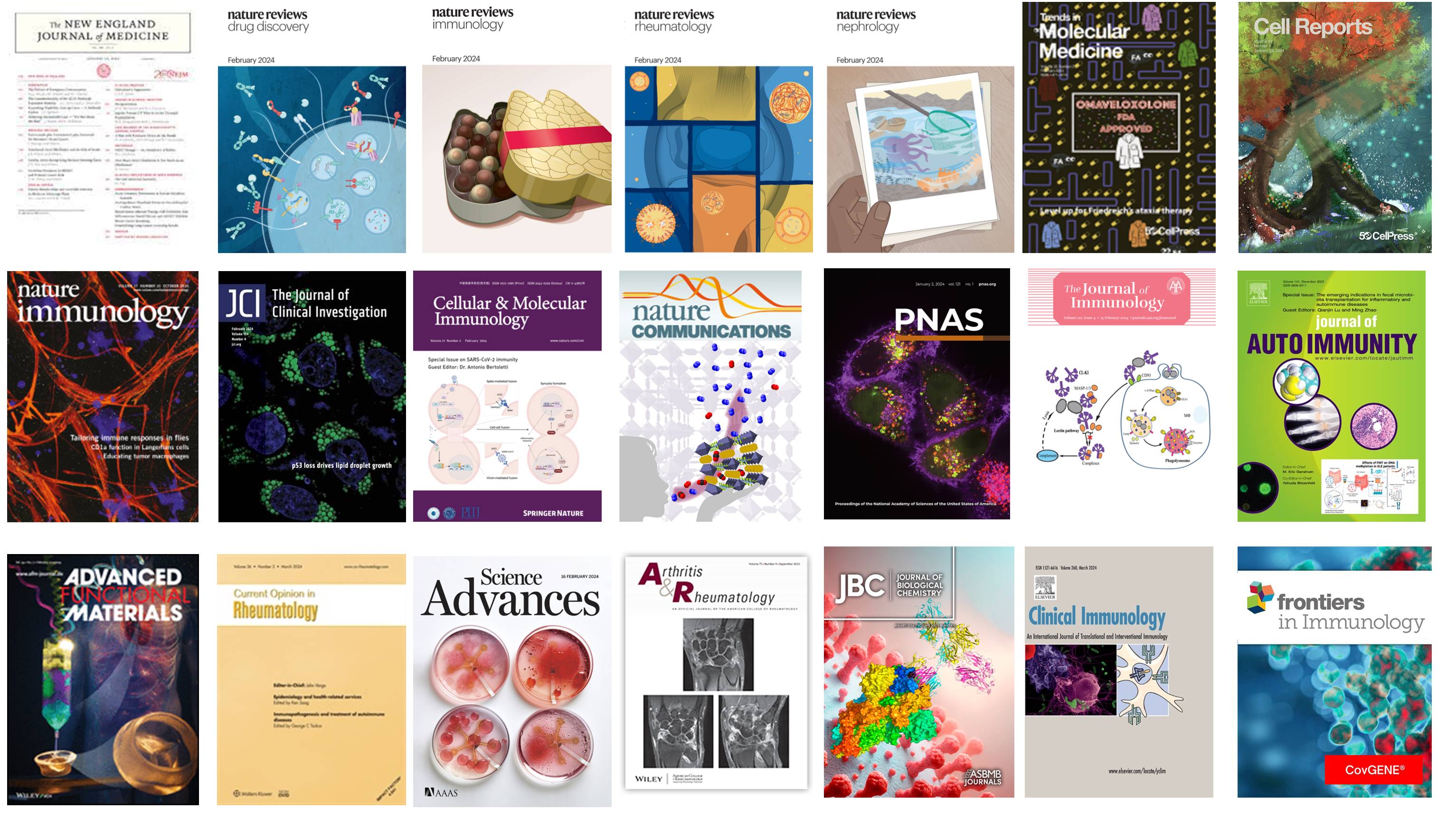Bhargava, R., Lehoux, S., Maeda, K., Tsokos, M. G., Krishfield, S., Ellezian, L., Pollak, M., Stillman, I. E., Cummings, R. D., & Tsokos, G. C. (2021). Aberrantly glycosylated IgG elicits pathogenic signaling in podocytes and signifies lupus nephritis. JCI Insight, 6, Article 9. https://doi.org/147789 [pii]10.1172/jci.insight.147789e147789
Lupus nephritis (LN) is a serious complication occurring in 50% of patients with systemic lupus erythematosus (SLE) for which there is a lack of biomarkers, a lack of specific medications, and a lack of a clear understanding of its pathogenesis. The expression of calcium/calmodulin kinase IV (CaMK4) is increased in podocytes of patients with LN and lupus-prone mice, and its podocyte-targeted inhibition averts the development of nephritis in mice. Nephrin is a key podocyte molecule essential for the maintenance of the glomerular slit diaphragm. Here, we show that the presence of fucose on N-glycans of IgG induces, whereas the presence of galactose ameliorates, podocyte injury through CaMK4 expression. Mechanistically, CaMK4 phosphorylates NF-kappaB, upregulates the transcriptional repressor SNAIL, and limits the expression of nephrin. In addition, we demonstrate that increased expression of CaMK4 in biopsy specimens and in urine podocytes from people with LN is linked to active kidney disease. Our data shed light on the role of IgG glycosylation in the development of podocyte injury and propose the development of "liquid kidney biopsy" approaches to diagnose LN.

